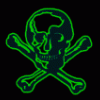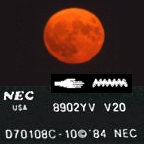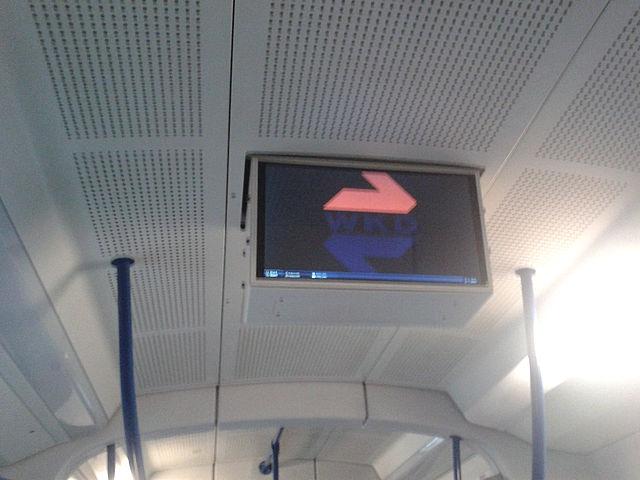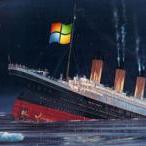Leaderboard
Popular Content
Showing content with the highest reputation on 04/25/2019 in all areas
-
Yes, it breaks all Office 2010 apps on XP; not just Excel and Word. Even breaks free 2010 apps like the PowerPoint Viewer. I don't think it breaks any earlier versions of Office though. Well, the update you linked to is 4494528! The support page explains that it fixes a problem with an earlier update, 4486464. But AFAIK you still need to run regsvr32 MSI.DLL after installing it; I haven't heard that M$ re-released it with that mistake fixed. (Even if they did, it won't hurt to run that command anyway.)2 points
-
2 points
-
I installed the Windows XP Professional x64 operating system on a Samsung 970 Pro NVME SSD drive using an ASRock X99 Extreme4 motherboard. Really easy the second time. Download Kai Schtrom's driver here: https://sourceforge.net/projects/nvme-for-windows-2003-server/files/ Download KB932755 here: https://www.microsoft.com/en-us/download/details.aspx?id=11619 Download AOMEI Backupper Standard here: https://www.aomeitech.com/download.html Use diskpart in Windows 7 x64 to create the aligned partition on, and format, the NVMe drive (the Windows 7 OS must have an NVMe driver installed, or diskpart will not be able to see the NVMe drive). Use Device Manager in XP x64 to install Schtrom's driver, which makes the NVMe SSD available as a storage drive -- and the XP x64 operating system as such now includes the NVMe driver. Run the storport hotfix. Use AOMEI Backupper to clone the XP x64 disk to the NVMe disk (remember to align the partition). Reboot into the BIOS and set the NVMe drive to boot first. I don't know whether Kai Schtrom had Windows XP 64-bit in mind when he wrote his driver, but for those of you running that OS it does present the potential for significant performance improvement, to say the least.1 point
-
In my case it was strangely due to vmware services. i disabled them and vista was stable again. very strange..1 point
-
Try it via download via webproxy. The censorship has meanwhile hit Germany as well. Unfortunately I can not write what I think, there is no free internet anymore, only censorship!1 point
-
Microsoft Security Essentials Definition Updater update to version 1.7 Adjustment for support end of MSE1 point
-
@VistaLover...Thank you for the detailed explanation re:newmoon versions..understand a bit better now.1 point
-
I'm making this post in this thread in case followers of this thread missed important information on another thread that is relevant to this thread. The information regards what seem to be two essential updates that should be installed to Windows 7 SP1 systems that will still make them update-able in the future (should you so wish to selectively install any other Microsoft Updates in the future). Information is a follows: Microsoft are going to start signing future Microsoft Updates using (what they call) SHA-2 only (so SHA-1 signing is being dropped). This change for Windows 7 starts on August 13, 2019. To accommodate this Microsoft have now released two Windows Updates that will make Windows 7 SP1 capable of reading the new SHA-2 signed Microsoft Updates. If after the August deadline you find out that there is some other new Microsoft Update that is essential to install to your system then you won't be able to install it if you don't, now, install the two current Microsoft Update SHA-2 patches. For more information see this webpage: 2019 SHA-2 Code Signing Support requirement for Windows and WSUS The two patches that need to be installed to Windows 7 SP1 to accommodate this change are as follows: SHA-2 code signing support update for Windows Server 2008 R2, Windows 7, and Windows Server 2008 (KB4474419) Standalone Install Download: Microsoft Update Catalog - KB4474419 Servicing stack update for Windows 7 SP1 and Windows Server 2008 R2 SP1: March 12, 2019 (KB4490628) Standalone Install Download: Microsoft Update Catalog - KB4490628 The original thread that I got some of this information from is: https://msfn.org/board/topic/178186-looking-for-info-about-the-upcoming-standalone-sha-2-patch-for-win7/ It is worth reading that thread as there is mention towards the end of a someone running into difficulties when installing KB4474419. I installed both updates on my system, in the order given above - doing a reboot after each separate install, and experienced no difficulties at all. That brings my tally of manually installed by me Windows Updates on my Win7 SP1 x64 up to five. System is still purring nicely, yahoo! Hope this helps.1 point
-
@VistaLover Your hypothesis could be plausible. @roytam1 It is also written in the first post that Interlink MailNews is set as the default email client :1 point
-
sorry Jody. IE11 requires a native Windows Server 2012 or Embedded Win8 version - installation is blocked on normal / client versions of Win8 (MS seemed to be smart on that one in only allowing install of IE11 on Win8 Embedded & Server 2012)1 point
-
New acpi.sys for XP SP3 32 bit, all languages and compis. Please tell me results for making things better Dietmar acpi.rar EDIT: The problem is more complex: On my asrock fatal1ty z370 gaming k6 with acpi.sys 5048 I get again BSOD 0xA5 (0x03, xxx, C0140008, yyy). And in its Bios I isolated ALL CreateQwordField instructions. EDIT2: The problem may be really in QwordConstant: acpi.sys from XP has no problem with this word. But acpi.sys 5048 has. This I know, because in DSDT table from the asrock fatal1ty z370 gaming k6 there appear QwordMemory and QwordAcc. I do not isolate them. XP boots. And may be because of QwordMemory and QwordAcc BSOD 0xA5 (0x03, xxx, C0140008, yyy) with acpi.sys 5084 on the Asrock board. So, at the moment, acpi.sys 5084 is worse than my modded acpi.sys before.1 point
-
1 point
-
The skin is dark blue, so it's probably embedded. Unfortunately, I don't have equally good news. When I was at the reception of the building in which my office is located, I noticed that the POS connected to the computer was different. As I got closer, I noticed that the interface was completely different. While I was getting my keys and signing a document, I saw the screensaver popping up on the POS... "Blimey!" I thought, "it's Linux!". So I pretended to look at my phone and I took a picture. This is a sign that companies are moving over from XP: Apparently, old programmes are not compatible with the new Windows 10 Embedded for IoT and since programmers had to rewrite their code anyway, they just switched to Linux to avoid paying the licence and other things.1 point
-
@UCyborg: The XML-file won't open, there is some error dialog in my program (Windows 10). But I compared your codec graph with the Widget Diagrams in the data sheet, All Widgets seem to match. I can't see how VirtualBox will connect output's from Pin Widgets to your Host's (physical) Audio, but there are four possibilities according to the data sheet. In the mean time I found out that the Volume Knob needs Verbs different of VolumeWidget one's, so a Volume Knob will probably not work with VolumeWidget setting in HDACFG.INI. All I can suggest is trying one of the four Output-connected DAC's, they all have a Volume/Mute function. You can try VolumeWidget=$02 / VolumeWidget=$03 / VolumeWidget=$04 or VolumeWidget=$05. Always reboot inbetween.1 point
-
Just to confirm what we already know, I noticed this in my Windows System event log from my earlier attempts to use the later engine file - Microsoft Antimalware has encountered an error trying to load signatures and will attempt reverting back to a known-good set of signatures. Signatures Attempted: Current Error Code: 0x800700c1 Error description: Microsoft Antimalware is not a valid Win32 application. Signature version: 1.293.45.0;1.293.45.0 Engine version: 1.1.15900.4 And - Microsoft Antimalware has encountered an error trying to update the engine. New Engine Version: 1.1.15900.4 Previous Engine Version: 1.1.15800.1 Engine Type: Antimalware User: NT AUTHORITY\SYSTEM Error Code: 0x8007007f Error description: The specified procedure could not be found.1 point
-
April 2019 patches may cause issues with some Avast products. Edit: Avast has now issued micro-updates that fix those issues.1 point
-
No. It's not just maybe. Here're some facts... This is the ominous line in dependency walker: Notice it's an error, not a warning. Moreover, it appears for 1.1.15900.4, but not for 1.1.15800.1 or any other previous version of mpengine.dll (I've tested two more, but that should be enough, in this case). So, MS's attempt to kill XP through MSE lies on the mpengine.dll... That's good news! I count on @heinoganda kindly creating an automated updater, from these findings, as soon as he finds time for it, of course!1 point
-
Actually I think it's the same file. (M$ updates the definitions 2-3 times a day, so the third number keeps increasing.) The downloaded file can be opened with 7-Zip. It contains four malware definition files: a spyware definition "base" and "delta," and a virus definition base and delta. (It also contains two executable files: mpengine.dll and mpsigstub.exe.) On Windows 7, Windows Defender is antispyware only, so I'd assume it only uses the spyware definitions. You have to install MSE to get antivirus functionality. But I think on Windows 10, Windows Defender is both, and essentially replaces MSE.1 point
-
In fact, an early build of chrome51 works fine on vista chrome51 26791 point
-
There was a fix from MS for this: MicrosoftFixit50688.msi not easily available anymore, But I found it here.1 point
-
I think anti virus software is overrated. I never use it on any of my legacy systems and have never been infected. If anything, I think anti virus software encourages reckless behavior because it gives a false sense of security.1 point









